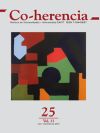Hemispheric Models of Material Progress in New Granada and Colombia (1810-1930)
Main Article Content
Keywords
Immigration, United States, Spanish America, New Granada, Colombia, Argentina, Venezuela, Cuba.
Abstract
This article argues that New Granadian and Colombian leaders examined models of material and intellectual progress in the United States and in their neighboring countries within the hemisphere. For many Spanish-Americans, the material progress already achieved by the United States and the North Atlantic overall was an idealized end, and they looked at some U.S. institutions as potential templates. As for the means to meet such an idealized end, influential people in New Granada and Colombia found among their neighboring countries a more pragmatic set of experiences that would help them foster progress in their own right. Over the second half of the nineteenth century, and more actively when turning into the twentieth, some Colombian leaders sought to follow the example of countries such as Argentina, one of the front-runners of Latin American contemporary progress.
Downloads
References
Archivo Histórico de la Cancillería Argentina (AHCA), Diplomática y Consular, Consulado General de Colombia, Caja 444, 1890.
Archivo General de la Nación (AGN), Ministerio de Relaciones Exteriores, Diplomática y Consular, Consulado de Colombia en Argentina, Buenos Aires, Carpeta 110, 1872-1910 and Carpeta 117, 1928.
Periodicals
“Annexation.” (1845, July). In: The United States Magazine and Democratic Review, XVII(LXXXV), 5–10.
Codazzi, A. (1850, December 21). “Apuntamientos sobre inmigracion i colonización. Al señor Secretario de Estado en el D. de Relaciones Este-riores.” In: Gaceta Oficial. Bogotá.
“Comida dada en Nueva York al Jeneral Santander.” (1832, May 20). In: Gaceta de La Nueva Granada. Bogotá.
“Contestación dada á las objeciones hechas en la tribuna contra la exis-tencia del colegio militar.” (1833, December). In: Mercurio Peruano. Lima, Perú.
“¿Cuál es el efecto de la emigración en las Repúblicas Americanas?” (1848, May 4). In: Gaceta Oficial. Bogotá.
“Gen. Mosquera.” (1861, September 1). In: The New York Times. New York.
“Inmigración.” (1848, November 5). In: Gaceta Oficial. Bogotá.
“Iron steamers wanted on the Magdalena river.” (1850, April 4). In: Daily National Intelligencer. Washington, DC.
Mc. Conaughy, J. W. (1916, January). “South America a land of the futu-re.” In: Munsey’s Magazine, LVI(IV).
“Qué es la civilización.” (1849, August 9). In: La Civilización. Bogotá.
“Relaciones esteriores.” (1832, February 16). In: Gaceta de La Nueva Gra-nada. Bogotá.
“The great nation of futurity.” (1839, November). In: The United States Democratic Review, Volume 6(23), 426–430.
(1832, June 18). Mercurio Peruano. Lima, Perú.
Printed & Published Documents
Alberdi, J. B. (1886). Obras completas de J. B. Alberdi. (Vol. 1). Buenos Aires: La Tribuna Nacional.
Camacho Roldán, S. (1898). Notas de viaje: Colombia y Estados Unidos de América (4th ed.). París: Garnier Hermanos.
Colombia. (1875). Constitución i leyes de los Estados Unidos de Colombia, espedidas en los años de 1863 a 1875. Bogotá: Imprenta de M. Rivas.
Galindo, A. (1900). Recuerdos históricos, 1840-1895. Bogotá: Imprenta de la Luz.
González, F. (1975). Memorias. Medellín: Bedout.
Ministerio de Relaciones Exteriores de Colombia. (1901). Anales diplomáticos y consulares de Colombia (Vol. 2). Bogotá: Imprenta Nacional.
Ospina Rodríguez, M. (1990). Antología del pensamiento de Mariano Ospina Rodríguez (Vols. 1–2). Bogotá: Banco de la República.
Uribe Uribe, R. (1908). Por la América del Sur. Bogotá: Imprenta Eléctra.Zavala, L. de. (1834). Viage a los Estados-Unidos del Norte de América. París: Impr. de Decourchant.
References
Barrenechea, A. M. (1988). “Sarmiento y el binomio “Buenos Aires/Cór-doba”.” In: Revista Iberoamericana, 54(143), 449.
Breña, R. (2013). “Liberalism in the Spanish American world, 1808-1825.” In: M. A. Centeno (ed.) State and nation making in Latin America and Spain: Republics of the possible. Cambridge: Cambridge University Press.
Bushnell, D. (1993). The making of modern Colombia: A nation in spite of itself. University of California Press.
Campuzano Hoyos, J. A. (ed.). (2006). Fuentes documentales para la historia empresarial. Siglo XIX en Antioquia. Medellín, Colombia: Fondo Editorial Universidad EAFIT.
Casas Sanz de Santamaría, A. (1963). La patente de invención. Bogotá: Pontificia Universidad Javeriana.
De Onís, J. (1952). The United States as seen by Spanish American writers, 1776-1890. New York: Hispanic Institute in the United States.
Delpar, H. (1981). Red against blue the liberal party in Colombian politics, 1863-1899. University of Alabama Press.
García Estrada, R. de J. (2006). Los extranjeros en Colombia: su aporte a la construcción de la nación (1810-1920). Bogotá: Planeta.
Garrido, M. (1993). “La Bagatela: Nariño, divulgador de ideas.” In: Credencial Historia, (48).
Germani, G. (1966). “Mass immigration and modernization in Argenti-na.” In: Studies in Comparative International Development, 2(11), 165–182.
Hale, C. A. (1972). El liberalismo mexicano en la época de Mora (1821-1853). Mexico: Siglo Veintiuno.
Horna, H. (1973). “Francisco Javier Cisneros: A pioneer in transportation and economic development in Latin America, 1857-1898.” In: The Ame-ricas, 30(1), 54–82.
López, E., & Kalmanovitz, S. (2016). “La idea federal en el nacimiento de la república colombiana 1810-1828.” In: A. Alvarez & J. S. Correa (eds.). Ideas y políticas económicas en Colombia durante el primer siglo republicano(pp. 123–154). Bogotá: Universidad de los Andes.
Martínez, F. (2001). El nacionalismo cosmopolita: la referencia europea en la construcción nacional en Colombia, 1845-1900. Bogotá: Banco de la República - Instituto Francés de Estudios Andinos.
Moya, J. C. (1998). Cousins and strangers. Spanish immigrants in Buenos Aires, 1850-1930. Berkeley: University of California Press.
Ospina Vásquez, L. (1987). Industria y protección en Colombia, 1810-1930(4th ed.). Medellín: FAES.
Pineda, Y. (2009). Industrial development in a frontier economy: the industria-lization of Argentina, 1890-1930. Stanford, CA: Stanford University Press.
Rivas, R. (1961). Historia diplomática de Colombia, 1810-1934. Bogotá: Impr. Nacional.
Rocchi, F. (2006). Chimneys in the desert: Industrialization in Argentina du-ring the export boom years, 1870-1930. Stanford University Press.
Safford, F. (1976). The ideal of the practical: Colombia’s struggle to form a technical elite. Austin: University of Texas Press.
Safford, F. (1985). “Politics, ideology and society in post-independence Spanish America.” In: L. Bethell (ed.). The Cambridge history of Latin Ame-rica (Vol. III). Cambridge: Cambridge University Press.




